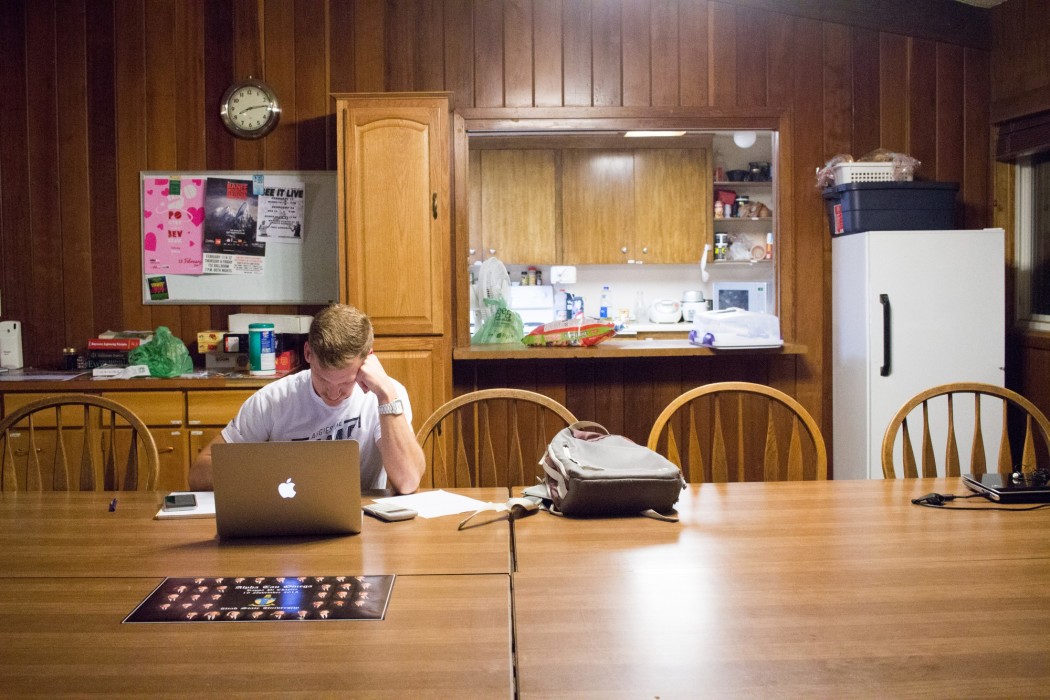ATO and Sig Ep houses won’t be torn down for now
The Logan City Council voted Tuesday to deny a code amendment that nearly derailed the potential Blue Haven development at the location of Sigma Phi Epsilon and the Alpha Tau Omega house along with two other apartment buildings at 743 E and 800 N.
The council voted against the potential Blue Haven development 3-2 with one abstention.
John Brandley is the head of the Blue Haven and he is also the owns the Sig Ep and ATO property. He said he is unsure whether he is going to continue to push to build Blue Haven in Logan. Instead, he said he might find other development opportunities outside of the city’s tough ordinances.
“We have other options,” he said to the city council. “We have invested thousands of dollars and months of time and research into pushing for this development.”
Brandley said the Blue Haven project would take pressure off students who are searching for student housing, it would increase revenue for Logan City, it would keep up with the growing demand of USU students and it would help to improve traffic and air quality by being so close to the university.
“Those who have to travel across town wouldn’t anymore because they will essentially live on campus,” he said.
When it comes to developing businesses and apartments, typically it is the Planning and Zoning Commission’s responsibility to allow or disallow this kind of development. However, the Blue Haven proposal was sent to the Logan City Council after it was denied approval from the Planning and Zoning Commission on Jan. 15. The commission denied the project on the pretense that the city council would be the best entity to address the zoning problem Blue Haven faces.
On Tuesday, the issue once again came down to deciding whether or not to change zoning laws in an area called Campus Residential. Campus Residential was zoned with the intention to contain Utah State University students in a two by six block geographic area near the university. The Blue Haven development team wanted to amend the zoning laws in the CR zone to allow for 240 occupants per acre, rather than the current ordinance that allows a maximum of 40 dwelling units per acre.
Ryan Mackowiak, the architect for the Blue Haven project, said the team is not trying to break any zoning laws that are already set in place. The team is attempting to change the way the city defines its zoning laws.
“We are trying build the same box of Legos,” he said, “But we are just trying to say there are other ways of building the Legos set without increasing the number of people to be in the zone.”
Regardless, the council’s decision to deny the Blue Haven development is based on out-dated principles of measuring occupancy. In fact, Orem City zoned an area where they are also attempting to corral student development and apartment buildings, just like Logan City. But, instead of having a maximum number of occupants who can live in the zoned area like Logan, Orem has a minimum occupancy per acre requirement.
Jeremy Raymond, the lawyer representing the proposed Blue Haven project, said if Logan approved Blue Haven, it would take pressure from students off of surrounding neighborhoods and keep them in the Campus Residential zone.
“Not having Blue Haven throws students into an adjacent neighborhoods,” he said. “Let’s avoid this by allowing Blue Haven to house these students.”
The Blue Haven development team already jumped through numerous hoops to get the proposed development up-to-par with Logan’s out-dated ordinances. The design team went to extensive lengths to keep the five-story apartment building shorter than 50 feet, even though the proposed land to build the apartment is on a 40 degree slant.
City Council member Jeannie Simmonds voted against Blue Haven, but she said she would like to see it go forward.
“I just want more assurance,” she said.
Brandley said the council are made is made up of good people who want to follow the General Plan.
“‘Vision without implementation is hallucination,'” Brandley said as he quoted the General Plan. “The city’s General Plan has a vision that the city’s policy’s have made impossible to implement, creating the hallucination of accomplishment.”
— morgan.pratt.robinson@gmail.com

